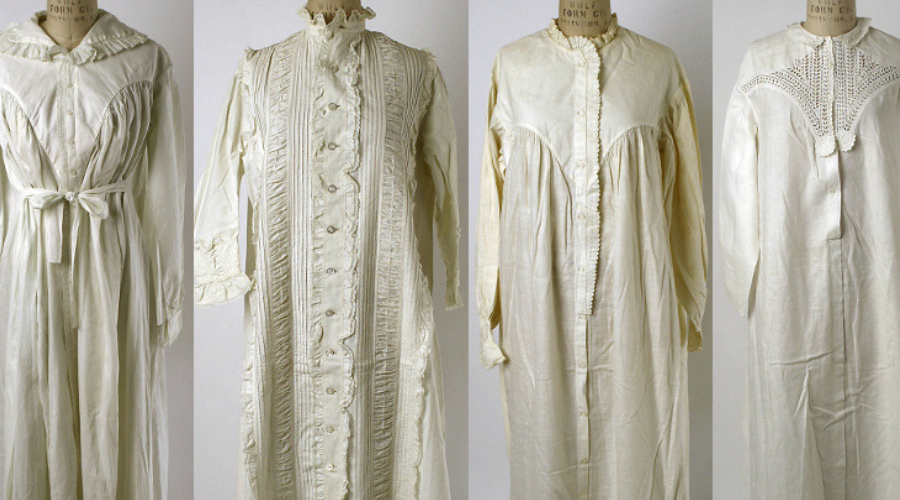Evolution Of Sleepwear Through The Decades
•Posted on October 03 2018

Human beings want to look good no matter what the place or time. Of course – otherwise, there would be no fashionable sleepwear, right? But there’s more to it than what meets the eye. The clothes you wear to sleep decide how well your body will spend the night time tucked away beneath a blanket dreaming of stars. In fact, history tells us that sleepwear evolved specifically for the purpose of providing better comfort while sleeping, before coming into mainstream fashion.
On that note, let’s not keep you waiting. Remember that cozy night dress for a honeymoon? Or those comfy cotton night suits your brother gifted you? Tug them on, because we are going to tell you a story…
Once upon a time, there were ‘pae jamas’
It all began with the humble pyjama. Born in the Indian subcontinent, the pyjama is derived from the combination of Hindi words ‘pae’ and ‘jama’ which translates to ‘leg clothing’. Therefore, it is easy to conclude why the traditionally loose or tight-fitting trousers with a drawstring to tie around the waist were called pyjamas. Interestingly, during those days, pyjamas were worn by both men and women. These pyjamas were often accompanied to sleep with tunics and were prevalent across all of Asia – all this before the British made them globally popular in the 1800s. If you’re wondering, before pyjamas became popular, people usually slept naked or in their undergarments.
And there were nightshirts too
But the evolution of sleepwear didn’t only pertain to pyjamas. Nightshirts resembling Roman tunics and nightgowns became popular in the 1800s too. It was then in 1860 that the first true categorization of nightwear emerged with the division of nightshirts into ankle-length ‘nightshirts’ and knee-length nightgowns. This made them stand out from the traditional Victorian robes who particularly bought nightwear into the limelight by emphasizing on how night garments keep the body warm and protect the linen from sweat, dirt, and odor.
Sleepwear goes on the ramp
Enter the early 1900s, and suddenly, nightwear caught the eye of fashion designers. Thus, emerged the trend of lace, stars and bows on sleepwear in women’s pyjamas – conveying an essence of beauty and style through night clothes for the first time. With the arrival of the 1920s, nightwear for women became associated with sexuality and vivaciousness. Models and fashion designers popularized colorful flapper style dresses and negligees, and materials like satin and lace became a sign of luxury sleepwear. In the 1930s, Hollywood adopted nightwear and established it as an intrinsic part of flaunting style with further additions such as feathers, fur, and more.
Suddenly, the world was at war, but not for Dior
World War II put a dent in lavish materials for designer sleepwear. However, once it got over, legendary fashionistas like Christian Dior kick-started a revolution in women’s sleepwear by creating shorter and sexier silhouette nightgowns along with sweeping satin gowns with stunning embroidery. Silk and chiffon fabrics entered the scene, too.
The sixties, discos, and sleepwear
Palazzo pyjamas and nightwear made a shock entry into evening and loungewear in the 1960s and 1970s, and lingerie for women became the perfect symbol of boldness, confidence, sex appeal, and of course, bedtime comfort. The disco generation saw pyjama dressing become a universal, unisex custom.
And here we are now. While sleepwear for men evolved until the staple shirt and pyjama ‘night-suit’, women took their sleepwear to new, luxurious heights. Today, luxury nightwear in India for both men and women brings back the international design elements and trends, probably silently aware that it is India where it all began. It’s time to explore ladies nighty online and pajama sets which are not going out of trend for years to come.
Comments
0 Comments
Leave a Comment